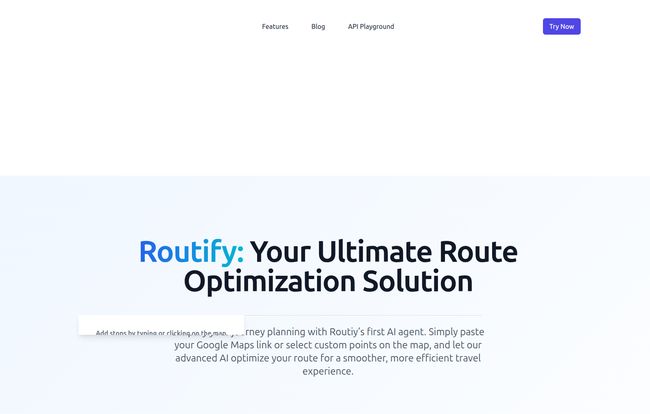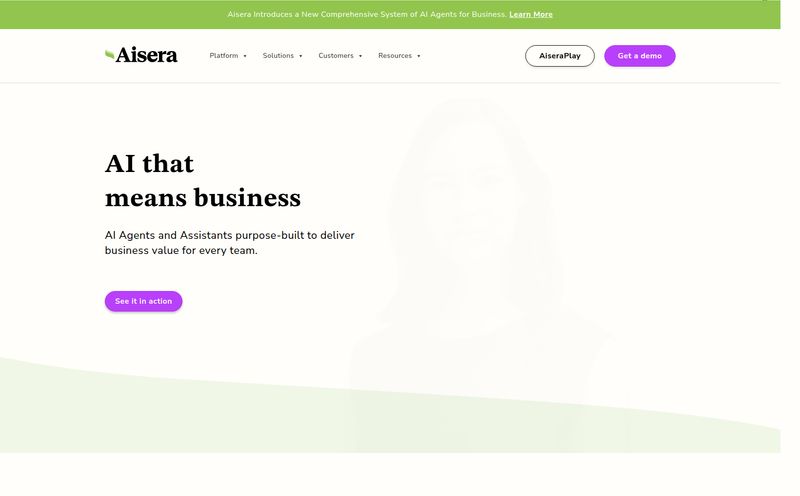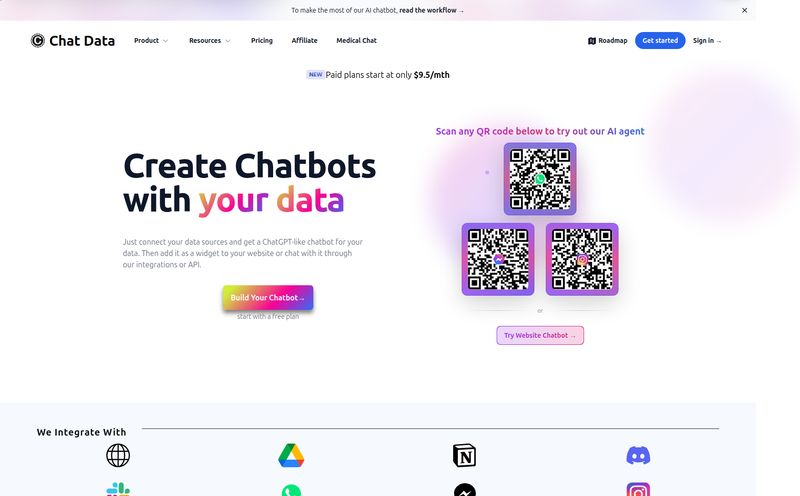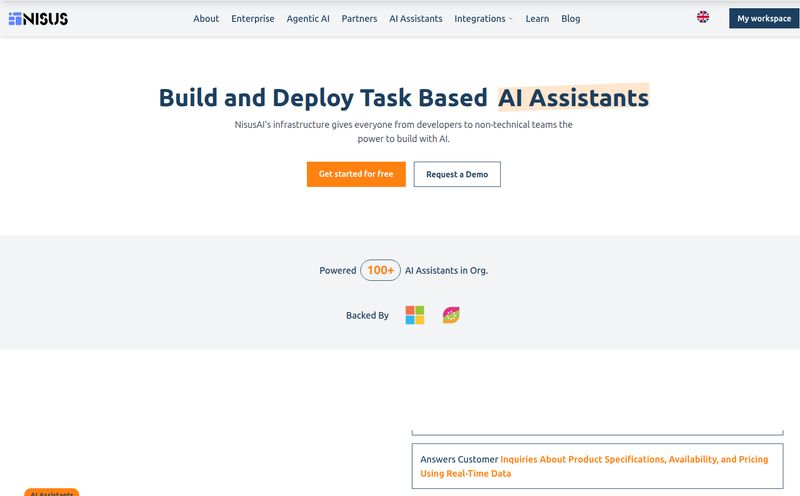If you've ever spent a morning staring at a list of 30 addresses, a half-empty coffee cup, and a Google Map that looks like a bowl of spaghetti, you know the pain. You try to drag and drop pins, you try to mentally calculate the 'best' order, and by 10 AM, you're already behind schedule. I’ve been in the logistics and traffic-gen game for years, and I’ve seen grown men weep over inefficient delivery routes. It’s a genuine business killer.
For a long time, the solution was just... get better at guessing. Or hire a dispatcher who had some kind of sixth sense for traffic patterns. But now, we're in the age of AI. And tools like Routify are popping up, promising to solve this age-old headache with algorithms and machine learning. The big promise? “Work Smarter, Not Harder.” But as we know, marketing slogans and real-world performance can be two very different things. So, I took a look under the hood to see if Routify is the real deal or just another piece of shiny tech.
So What Exactly is Routify?
In simple terms, Routify is a smart route optimization platform. Think of it as Google Maps on a cocktail of steroids and caffeine. You give it a whole mess of stops—we’re talking dozens, even hundreds—and its AI engine doesn't just map them. It optimizes them. It chews on all the data and spits out the most efficient path to get everything done, saving you time, fuel, and probably a few gray hairs.
It’s built for anyone whose business lives and dies on the road: delivery fleets, field service technicians, sales teams, home healthcare providers, you name it. It’s designed to take that tangled logistical knot of multi-stop planning and neatly untie it with one click. A bold claim, for sure.
The Features That Actually Matter
A platform is only as good as its features, right? Routify’s homepage throws a few buzzwords around, but let’s break down what they actually mean for someone on the ground.
AI-Powered Optimization and That One-Click Magic
This is the core of the whole operation. Routify uses what they call “proprietary learning algorithms” to plan your routes. It's not just about the shortest distance. The AI considers a bunch of variables to find the smartest path. I’ve seen systems like this before, and the difference is night and day compared to manual planning. The “one-click” part is especially appealing. The idea of uploading a spreadsheet of addresses and just getting a finished, optimized route back in seconds is, frankly, what we've all been waiting for.
Real-Time Dynamic Routing
Here’s where things get interesting. A plan is great until it meets reality. A surprise accident on the freeway, a pop-up road closure, a last-minute priority delivery... A static, pre-printed route map becomes useless pretty fast. Routify claims to offer real-time dynamic routing, which means it continuously monitors conditions and can adjust routes on the fly. This is huge. It turns your route from a static document into a living, breathing plan that adapts to the chaos of the real world. This is the feature that separates professional tools from basic mapping apps.

Visit Routify
Smart Territory Planning
I really like this one. It shows they're thinking beyond just a single day's work. Smart Territory Planning lets you manage and assign jobs based on geographical zones. You can balance workloads between drivers, ensure you’re not sending two trucks to the same neighborhood on different days, and generally make your entire operation more efficient on a macro level. It’s about building a smarter system, not just a smarter single route. It’s strategic, and in my experience, strategy is where the big money is saved.
Eco-Smart Routing and The Integration Hub
The eco-friendly angle is a nice touch. With fuel prices being what they are, a route that saves fuel also saves a ton of money. It’s good for your bottom line and your carbon footprint. A win-win. The Enterprise Integration Hub is also a key feature for larger businesses. The ability to plug Routify into your existing CRM or order management system is critical for automating workflows. Without it, you're just creating another data silo.
The Real-World Benefits, Not Just The Hype
Okay, features are cool. But what does this mean for your P&L sheet? The biggest and most obvious benefit is cost reduction. Less time on the road means less fuel burned and less wear-and-tear on your vehicles. It also means you can potentially fit more jobs into a single day without burning out your drivers. That’s a direct boost to revenue.
But don't sleep on the secondary benefits. Improved delivery efficiency leads to happier customers. When a package arrives on time, or a technician shows up within the promised window, it builds trust. Plus, giving your drivers a tool that makes their day less stressful? That improves employee retention. I’ve talked to enough fleet managers to know that driver turnover is a constant, expensive problem. A tool that genuinely helps them is worth its weight in gold.
No Tool Is Perfect: The Potential Hiccups
Now, it’s not all sunshine and optimized routes. Based on the info and my experience with similar platforms, there are a few things to keep in mind. First, there's likely a bit of a learning curve. Getting the most out of a powerful system means you have to actually learn how to use its advanced features. It’s an investment of time upfront.
Second, a system like this is completely reliant on its data. Garbage in, garbage out. If the map data is outdated or the real-time traffic info is spotty, the 'optimized' route might not be so optimal after all. You're putting a lot of faith in the platform's data sources. And finally, there's the dependency on internet connectivity. If a driver is out in a rural area with no signal, they can't get those real-time updates, which kind of defeats part of the purpose. A solid offline mode is a must-have.
So, What's The Damage? A Look at Routify's Pricing
This is the part where I'd normally break down the pricing tiers for you. But, in a slightly awkward turn of events, when I went to find Routify’s pricing page... I was greeted with a 404 error. Whoops. It happens to the best of us, I suppose.
The lack of public pricing isn't a huge red flag, though. It's pretty common for B2B SaaS platforms like this, especially those with an “Enterprise” focus. It usually means they have a custom pricing model based on things like the number of users or vehicles in your fleet, and the specific features you need. My gut tells me you’re looking at a monthly subscription fee per user/vehicle. You'll have to reach out to their sales team for a direct quote. Don't be shy—it's the best way to see if it fits your budget.
Frequently Asked Questions About Routify
Who is Routify best for?
It's ideal for any business that runs multi-stop routes. This includes local delivery companies, e-commerce fleets, field sales teams, maintenance and repair services, home healthcare agencies, and any other operation where drivers need to make multiple stops efficiently.
Can Routify really handle hundreds of stops?
Yes. That's one of its main selling points. The platform is designed to process large lists of destinations and optimize them with its "One-Click Optimization" feature, which would be practically impossible to do manually.
Does it update routes in real-time?
Yes, the "Real-Time Dynamic Routing" feature is designed to do exactly that. It accounts for live traffic, accidents, and other delays to adjust routes on the fly, assuming the driver has an active internet connection.
Is Routify difficult to set up?
There might be a slight learning curve to master all the advanced features, as with any powerful software. However, the core functionality of uploading stops and getting a route seems straightforward. The Enterprise Integration Hub suggests it's built to be integrated into existing workflows, which usually requires some initial setup.
Can Routify connect to my CRM or other software?
Yes, that's the purpose of the "Enterprise Integration Hub." It's designed to connect with other business systems to create a more automated and seamless workflow, pulling order information directly instead of requiring manual entry.
My Final Verdict on Routify
So, is Routify the ultimate solution it claims to be? From what I can see, it has all the right ingredients. The focus on AI, real-time adjustments, and strategic territory planning shows a deep understanding of the problems that plague logistics-heavy businesses.
If you’re still planning multi-stop routes by hand or just using a basic mapping service, switching to a tool like Routify will almost certainly be a revelation. The efficiency gains in fuel, time, and labor costs are likely to provide a strong ROI, probably much faster then you'd think. It's a tool for businesses that are ready to stop leaving money on the table and start leveraging technology to gain a competitive edge.
My advice? Watch their demo. Get on the phone with their sales team. Give them your most chaotic route as a test. If it can tame your personal logistical beast, it’s probably worth the investment.
Reference and Sources
- Routify Official Website
- Wikipedia: The Traveling Salesman Problem (for some background on the complexity of routing)



